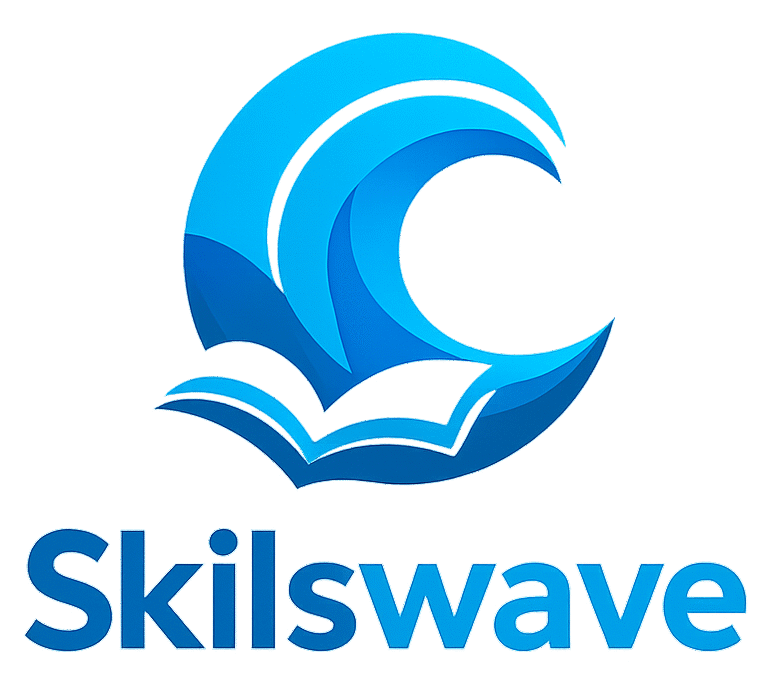Getting the most out of online learning platforms takes a bit of know-how and intentional planning. There are so many courses, video tutorials, and interactive learning tools available, but without a clear strategy, it’s easy to get overwhelmed or lose momentum. I’ve spent quite a bit of time finding my way through different online courses, from structured university programs to niche tech tutorials, and I’ve picked up practical ways to help you maximize your learning outcomes along the way.

Why Focus on Maximizing Online Learning Outcomes?
Online learning platforms have changed how education works for everyone. Students, hobbyists, and working professionals all benefit from these new possibilities. These platforms make learning more flexible and accessible than ever before. Reports say that by 2025, the global online learning market could reach over $350 billion; that means there’s a huge community of learners getting value from these digital spaces.
The sheer amount of content offered online makes picking the right approach important. Whether you’re looking to pick up a new skill for work, pass an exam, or just learn out of curiosity, using a focused strategy can turn casual browsing into active skill-building. Finding the right blend of platform features and personal habits helps you get more from every lesson.
Online learning first revolved around recorded lectures and static materials, but now includes peer collaboration, instant feedback, selfpaced modules, and even immersive tech like VR. With so many options, knowing how to organize your study can be the key to not just staying motivated but actually seeing your progress and achieving your goals.
Starting Off Strong with Online Learning Platforms
Kicking things off on the right online learning platform is a super important first step. Some platforms like Coursera and edX offer universitylevel courses, while places like Udemy, Skillshare, or Khan Academy focus on practical or creative skills. Picking a platform that fits your goals and matches your learning style is worth the effort and makes the whole process go much more smoothly later on.
Here are a few key things to keep in mind as you get started:
- Platform Features: Check if the platform provides interactive exercises, quizzes, community spaces, and downloadable resources.
- Course Structure: Look for structured learning paths with clear objectives and check-in points so you can track your progress.
- Peer Interaction: Peer review, group projects, and discussion boards can help you stay engaged and deepen your understanding.
Getting familiar with basic features like these gives you a good understanding of how you’ll spend your time and how to use the resources easily and effectively.
Actionable Steps to Make Online Learning Stick
Jumping into online learning can be exciting, but without a plan, it’s easy to lose your way. Here are some steps that I’ve found really helpful in getting more from each course or lesson:
- Set Clear Goals: Identify what you want to achieve and why. Are you earning a certificate, preparing for a job, or pursuing a hobby? This gives your learning a clear direction.
- Create a Dedicated Study Routine: Set aside specific times in your calendar for learning, just as you would for an in-person class or meeting.
- Limit Distractions: Use tools like browser blockers and turn off phone notifications during study sessions to stay focused.
- Get Involved Actively: Take notes, ask questions in forums, and participate in quizzes to cement your learning.
- Reflect and Review: After each module, summarize what you’ve learned and check progress towards your goals. Regular review keeps new knowledge fresh and helps it stick.
Mixing these habits isn’t just about finishing courses. It’s about really absorbing the material and finding ways to put it to work in realworld situations.
Common Roadblocks (and Real-World Tips to Overcome Them)
Online learning offers a lot of flexibility, but with that comes a new set of challenges. Here are a few hurdles that come up often and practical advice for each:
- Staying Motivated: Break learning into smaller tasks and celebrate small wins. Joining online study groups or “accountability pods” makes it easier to keep going.
- Time Management: Use online calendars or apps like Trello to plan your study sessions and set reminders. Having deadlines, either platformgenerated or selfmade, keeps you on track.
- Information Overload: Avoid signing up for too many courses at once! Focus on one or two topics to prevent burnout and ensure depth over quantity.
- Lack of Feedback: Seek out courses with interactive elements like quizzes and assignments or join discussion boards where you can get feedback from peers and instructors.
Staying Motivated
Online learning can feel isolating, especially without a traditional classroom structure. What’s worked for me is setting microgoals like, “Watch one video and complete the quiz before dinner,” rather than trying to do everything at once. Checking in with peers, even just for a quick chat, brings in accountability and a sense of community.
Time Management
One of the biggest perks, flexibility, can turn into a problem if you’re not organized. Scheduling short, focused study blocks is far more sustainable than marathon sessions. Digital tools and daily checklists keep your progress visible and prevent tasks from piling up.
Information Overload
With thousands of options, it’s easy to enroll in every interesting course. From my experience, focusing deeply on one core subject gives you a better grasp, and regularly going back to your notes turns scattered information into lasting knowledge.
Lack of Feedback
Instant feedback is a major benefit of online learning, but not all courses provide it. Choosing courses with plenty of chances to practice (think selfgraded quizzes and live assignments) helps you spot mistakes early and improve as you go.
Keep in mind: sticking with a plan and troubleshooting along the way turns obstacles into steps on your learning adventure.
Leveling Up: Advanced Approaches for Better Results
Once you’re comfortable using online platforms, a few advanced tactics can really take your results up a notch. Here’s how I took my own learning further and made lasting progress:
Mix Learning Modalities: Try checking out your course content in different formats: read articles, watch videos, do hands-on exercises, and join live webinars if you can. Switching things up keeps it interesting and helps info stick for the long-term.
Practice Retrieval: Instead of just rereading notes, quiz yourself, teach concepts to others, or try applying knowledge through mini-projects.
Connect Ideas: Try mapping out how new material links up with what you already know. Making connections between ideas cements knowledge and helps you remember it down the road.
Use ThirdParty Tools: Pair platforms with notetaking or mindmapping apps like Notion, Evernote, or MindMeister to organize your info and make review easier.
Long story short, layering these strategies enhances your interaction with online course material and often speeds up your learning progress.
What Features Should You Look for in a Learning Platform?
Some learning platforms are packed with helpful tools that can give your outcomes a real boost. Here are some to watch for:
- Interactive Quizzes and Assignments: Immediate feedback helps you identify gaps and reinforce new information quickly.
- Community Support: Discussion boards, comment sections, and group activities turn studying into a social experience and help keep motivation up.
- Mobile Access: Apps or mobilefriendly sites allow you to slip study sessions into even the busiest day, wherever you are.
When I was working through a coding course, I found platforms with built-in coding sandboxes super helpful. These let me practice code right away and experiment without fear of breaking anything.
- Certification and Recognition: Verified certificates or digital badges help you track your growth and can be valuable for your resume or portfolio.
- Structured Pathways: Curated course tracks for specific goals or career paths help cut down on decision fatigue and keep you on a clear path.
Checking out these features before signing up will keep your learning experience smooth and make sure you’re set up for success.
Frequently Asked Questions
Got questions? Here are a few I hear a lot when it comes to making online learning actually work:
Question: How do I find the best online platform for my needs?
Answer: Start by getting clear about your main learning goal—whether it’s certification, skillbuilding, or exploration. Compare platforms by checking available courses, interactive tools, peer support features, and reviews from other students.
Question: What can I do if I start a course and lose interest?
Answer: Zero in by setting small, doable milestones, or try switching to a different instructor or course format. Sometimes all it takes is a change in teaching style to get reenergized.
Question: How do I know if I’m really learning and not just coasting along?
Answer: Keep a reflection journal or regular summaries of what you learn, and challenge yourself to use what you’ve learned outside the lesson. If you can explain topics to someone else, you’ve likely got a solid handle on the material.
Getting Results That Stick
Getting the most from online learning platforms depends mostly on your approach and daily habits, way more than the platform itself. If you take the time to set goals, build a routine, and actively use the resources available, you’ll notice a real difference in what you get out of every course and class. When challenges crop up, solve them with practical tweaks and keep following your curiosity. That way every module, quiz, and project pushes you closer to what you want to achieve.
Online learning throws open doors to skills, people, and ideas you may never have stumbled upon otherwise. Build strong learning habits and invest in quality courses, and every hour you spend will pay off in knowledge and confidence down the line.
